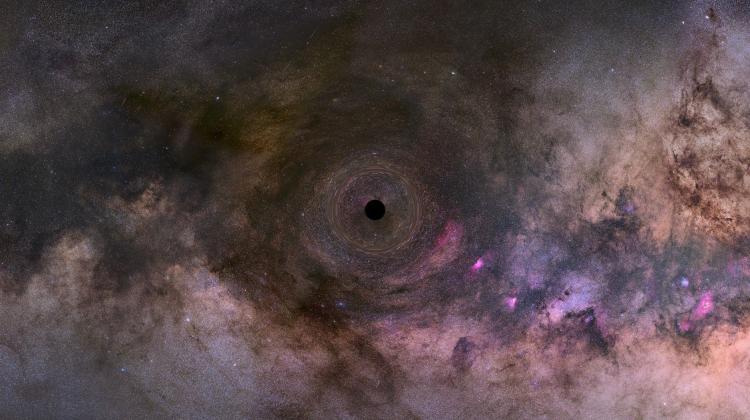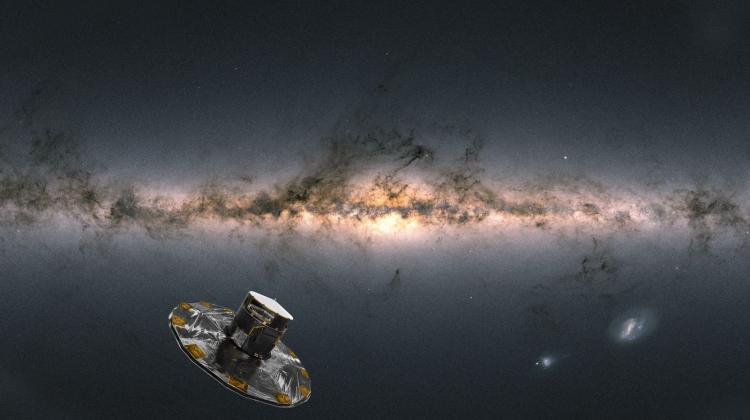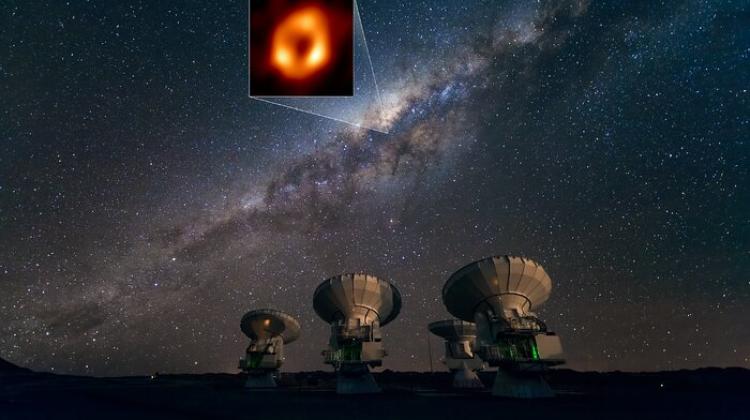Astronomer: The formation of the Milky Way was more complicated than we thought
 Photo: Fotolia
Photo: Fotolia
The Milky Way had to form in a more complicated way than we thought. It is possible that its history was a bit more violent, says Tomasz Banyś from the EC1 Planetarium in Łódź, commenting on the recently published new model of our galaxy.
Scientists from Macquarie University and the Chinese Academy of Sciences presented a new model of the Milky Way in journal Nature Astronomy. The model is based on the observation of giant stars - Cepheids. It shows that our galaxy is not a flat disk, as previously thought, but the farther away from the core, the more distorted it is.
For 50 years there have been indications that the hydrogen clouds in the Milky Way have an unusually curved shape. The new map shows that the curved disk also contains young stars. According to the authors of the discovery, this confirms that the curved spiral shape is the result of the forces coming from the rotating, massive, central disk of the galaxy that contains stars. Similar curves have also been noticed in other galaxies.
Dr. Tomasz Banyś from the Planetarium in Łódź emphasises that astronomy is very dynamic, and thanks to technological progress, we now know more, and we more quickly change the way of understanding the structure of the Universe and its models. He reminds that we have known for nearly 100 years that some objects in space, which a layman would call "clouds", are actually other galaxies.
"We look at these other galaxies from a certain distance. These are distant objects, differently arranged, differently positioned in relation to us: we see some of them from the side or at a certain angle. But on this basis it is very difficult to conclude what our galaxy, the Milky Way looks like" - the astronomer adds.
As he emphasized, for several centuries we have been trying to draw the star distribution maps in our galaxy, and for decades - thanks to the development of radio astronomy and astronomy in other bands than the optical ones - we have known how the gas is distributed in it. And yet all this matter prevents us from seeing how the Milky Way is built up in its entirety.
No wonder, he says, that a few decades ago scientists were surprised to discover that the disk of the Milky Way seems to consist of several discs, which can be compared to rings that rotate independently of each other. Another surprise was the discovery that the stars are distributed more densely, while the gas - especially the molecular clouds of natural hydrogen - extends a bit further and in some places sticks out from this disk surface.
Recent research by astronomers, including the Chinese team, published in February in Nature Astronomy, sheds new light on current knowledge about the shape of our galaxy. "The distribution of certain characteristic stars astronomers use to measure distances in the Universe - Cepheids - shows that stars also slightly deviate from this galactic disk plane" - says Dr. Banyś.
While this is a new conclusion, according to the researcher it fits quite well what we have managed to observe with space telescopes in several other galaxies. "It`s just that it shows that our galaxy must have formed in a more complicated way than we thought. Perhaps its history was a bit more violent" - explains the astronomer.
He reminds that the previous attempts to explain deformations from the plane of the disk included various theories, such as the gravitational action of two galaxies orbiting the Milky Way: the Great and Small Magellanic Cloud. That theory was abandoned because the two galaxies were considered not massive enough to cause such an effect. The development of the concept of dark matter caused researchers to return to it and consider that the two galaxies immersed in the "soup" of dark matter could be sufficiently massive to be responsible for this effect. But ultimately this explanation was considered not entirely good.
The Andromeda Galaxy and the Triangulum Galaxy near the Milky Way, also quite massive objects, could also be responsible for this effect if they have already passed the Milky Way in the "cosmic dance". "Bur studies from a few months ago show that we are only now getting closer to these galaxies for the first time, which means that this concept can not be an explanation either" - the astronomer says.
The authors of the new Milky Way model do not refer to these studies. "They suggest that the internal disk in our galaxy, consisting mainly of stars, somehow +draws+ this external molecular cloud that constitutes the second disk. This causes the effect of curving and simultaneously deforming up and down from the plane of this disk" - explains. Dr. Banyś.
He notes the authors of the new model do not try to explain this phenomenon in more detail, stating that much more research is needed.
"And that is a fact, because due to the interactions of galaxies we have to continue to observe our and other galaxies. Especially when it seems that we understand gravity quite well, but we can not explain why sometimes it seems that something else, the proverbial dark matter, affects the behaviour and movements of objects" - says Dr. Tomasz Banyś.
"We must continue to model these interactions and try to understand them better with the help of developing telescopes and supercomputers" - adds the astronomer from the EC1 Planetarium in Łódź.
PAP - Science in Poland
szu/ zan/ kap/
tr. RL
Przed dodaniem komentarza prosimy o zapoznanie z Regulaminem forum serwisu Nauka w Polsce.



















